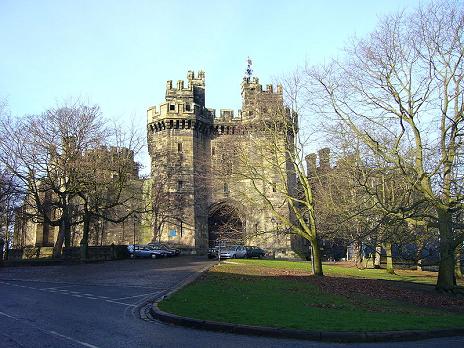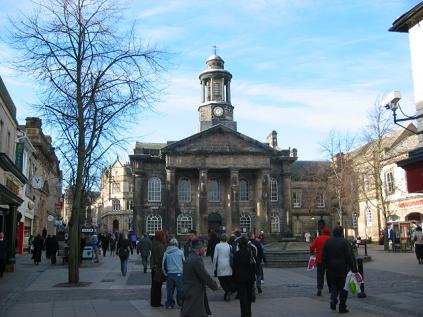Lancaster is a city in the county of Lancashire, in North West England, situated on the River Lune and the Lancaster Canal.
And it is a historic city, since its inception it has participated in important events in the history of England. The first traces of Lancaster's past date back almost 2.000 years ago, when the Romans established a settlement, remains of one of their buildings are still visible on Castle Hill to close the Priory.
After the Romans left the country, the Anglo-Saxons built whose fortifications on the same site formed the foundations of the present Norman castle, which began in the 11th century. At the same time, the Priory was initially founded as a cell of a Benedictine monastery.
Lancaster was declared a commercial city in 1193, and won the title of city in 1937 with the coronation of the King George VI. The Duchy of Lancaster, still in the hands of His Majesty, owns the castle. One of the better known names associated with historic Lancaster is that of John O'Gaunt, the second duke, whose son became King Henry IV in 1399.
Within its history, the most memorable events that occurred in Lancaster we can mention the dismissals of the city by the Scots twice during the year 1300, also the city is associated with the House of Lancaster during the Bitter Wars of the Roses in the second middle of the 15th century.
A hundred years later, the castle was besieged three times by royalist forces during the English Civil War, and in 1745 it was the Scots' turn again, when Bonnie Prince Charlie briefly occupied the city during the Jacobite rebellion of 1745.
At the end of the 18th century the city began to undergo various changes, the city grew and developed and prospered, the port of Lancaster was one of the most important ports in these times where tobacco, slaves, wood, coffee and other basic products of the expansion of the British Empire were sent.
Most notable among these are the old town hall on Market Square, today the City Museum, and the Palladian-style Custom House fine from 1764, which now serves as the Maritime Museum.
Today Lancaster is known as a major educational center. The University was founded in the mid-1960s, while technical and artistic subjects are taught at the Storey Institute.
It should be noted that Heysham has become a major port on the Irish Sea in its own right, while the extensive rural areas of the town itself are important to its agriculture.

